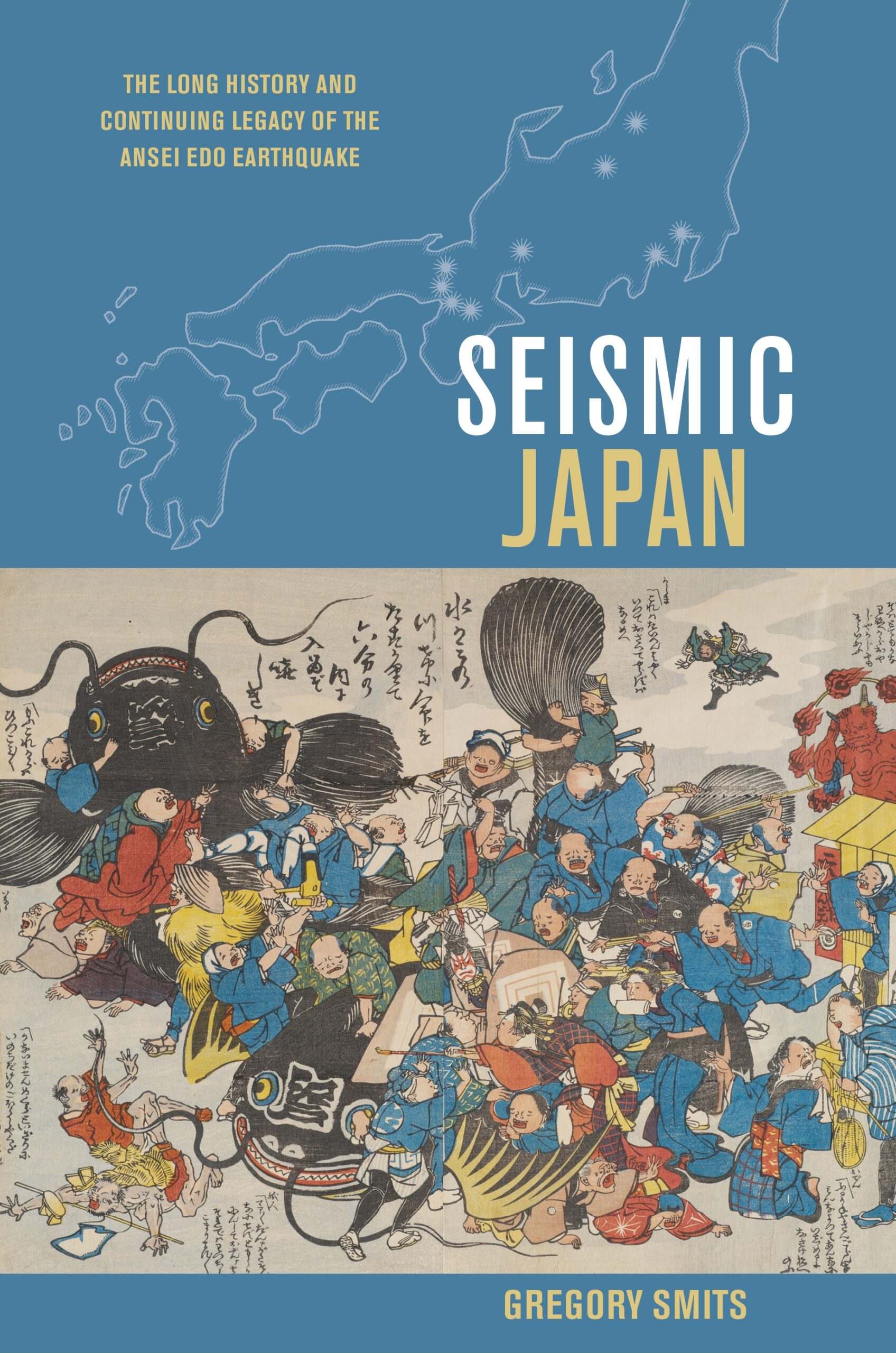Seismic Japan: The Long History and Continuing Legacy of the Ansei Edo Earthquake
- About the Book
-
What are we to make of contemporary newspapers in Japan speculating about the possible connection between aquatic creatures and earthquakes? Of a city council deciding to issue evacuation advice based on observed animal behavior? Why, between 1977 and 1993, did Japan’s government spend taxpayer money to observe catfish in aquariums as part of its mandate to fund earthquake prediction research? All of these actions are direct legacies of the 1855 Ansei Edo earthquake, one of the major natural disasters of the period. In his investigation of the science, politics, and lore of seismic events in Japan, Gregory Smits examines this earthquake in a broad historical context.
The Ansei Edo earthquake shook the shogun’s capital during a year of special religious significance and at a time of particularly vigorous seismic activity. It was also a turning point because, according to the prevailing understanding of earthquakes at the time, it should never have happened. Many Japanese, therefore, became receptive to new ideas about the causes of earthquakes as well as to the notion that by observing some phenomena—for example, the behavior of catfish—one might determine when an earthquake would strike. All subsequent major earthquakes in Japan resulted in claims, always made after the fact, that certain phenomena had been signs of the impending catastrophe. Indeed, earthquake prediction in Japan from 1855 to the present has largely consisted of amassing collections of alleged or possible precursor phenomena. In addition, the Ansei Edo earthquake served as a catalyst accelerating socio-political trends already underway. It revealed bakufu military weaknesses and enhanced the prestige of the imperial deity Amaterasu at the expense of the bakufu deity Kashima.
Anyone interested in Japan, earthquakes, and natural disasters will benefit from Seismic Japan. The work also serves as essential background for understanding the peculiar history of earthquake prediction in modern and contemporary Japan.
- About the Author(s)
-
Gregory Smits, Author
Gregory Smits is professor of history and Asian studies at Pennsylvania State University.
- Reviews and Endorsements
-
- Seismic Japan is an exciting work of social history. What distinguished the Ansei Edo Earthquake from its many predecessors in Japan were the accidental circumstances of time (a spiritually charged period of social and political instability) and place (Edo was Japan’s largest city and the headquarters of the Tokugawa shogun’s government). Smits argues that the 1855 quake prompted a rethinking of politics and religion in Japan. It opened new avenues for the scientific study of earthquakes and new ways of mitigating their consequences. It also exposed the incompetence of the Tokugawa rulers, who had failed to deal effectively with Commodore Perry’s Black Ships in 1853 and 1854 and were similarly unable to combat the forces of nature in 1855.
—M. William Steele, International Christian University, Monumenta Nipponica, 70:2 (2015)
- Seismic Japan is an exciting work of social history. What distinguished the Ansei Edo Earthquake from its many predecessors in Japan were the accidental circumstances of time (a spiritually charged period of social and political instability) and place (Edo was Japan’s largest city and the headquarters of the Tokugawa shogun’s government). Smits argues that the 1855 quake prompted a rethinking of politics and religion in Japan. It opened new avenues for the scientific study of earthquakes and new ways of mitigating their consequences. It also exposed the incompetence of the Tokugawa rulers, who had failed to deal effectively with Commodore Perry’s Black Ships in 1853 and 1854 and were similarly unable to combat the forces of nature in 1855.
- Supporting Resources
-





